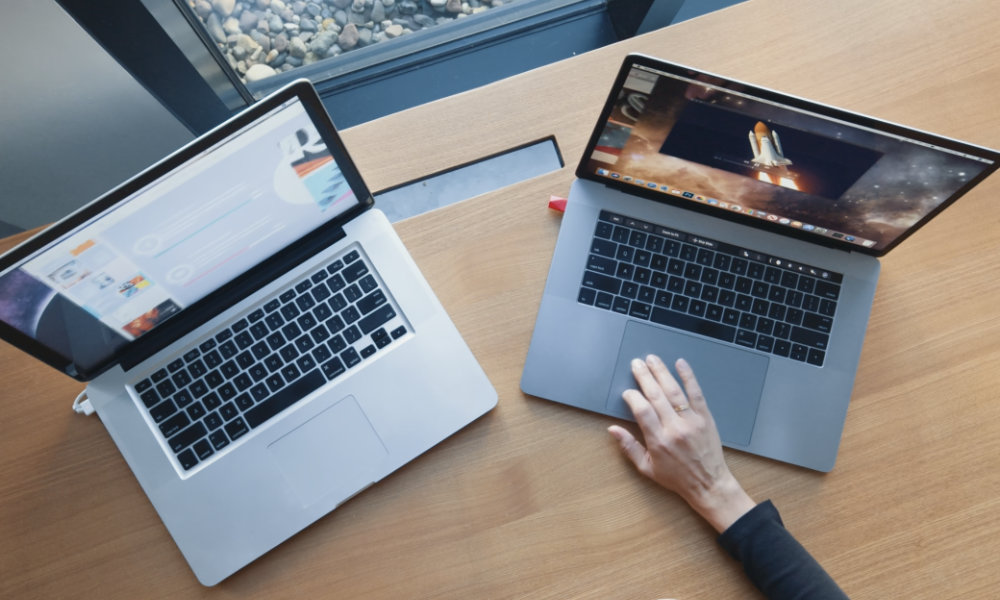This Small Company Refuses to Be Killed by Apple
 Credit: Luna Display
Credit: Luna Display
Toggle Dark Mode
When Apple unveiled Sidecar in macOS Catalina, it caused a bit of a furor with suggestions that it had once again usurped a third-party developer’s solution by building it into its own operating system.
Of course, while borrowing ideas from other companies is far from unheard of in Silicon Valley, when Apple does so, it’s often the target of more ire from developers and their loyal users alike, perhaps because of the usually developer-friendly image that the company tries to project.
It’s inevitable, however, and perhaps even desirable, that system-level features that are popular with a number of users will eventually be baked into the operating system itself.
Apple most famously did this with its Sherlock app back in 2001, unseating a little app known as Watson, which led to the coining of the pseudo-verb “sherlocked” to come to refer to any situation in which Apple takes a feature offered by a third-party app and makes it a core part of macOS or even iOS.
With Sidecar, Apple had clearly done it again by adding the native ability in macOS Catalina and iPadOS 13 to use an iPad as a secondary display — a feature previously part of a popular utility by Luna Display.
Of course, Luna’s implementation was slightly more complicated than what Apple was able to pull off with its own direct control of all of the hardware and software components, which makes a good case for why some solutions are better off being handled by the OS vendor. In Luna’s case, users needed to add a hardware dongle that would connect to their Mac to send their display output to the iPad.
Still, Luna Display’s founders naturally expressed disappointment that they had been “sherlocked” by Apple, but also promised that they weren’t going anywhere, adding that they would keep building Luna Display into a “pro” solution that would expand beyond what Sidecar was capable of offering — something that’s relatively easy to do, since like many of Apple’s first-party solutions, Sidecar still leaves a lot of room for third parties to innovate.
In fact, Luna Display was already there in many ways — the dongle solution means it works on any Mac, even something like a Mac mini, regardless of whether it can be upgraded to Catalina or not, and likewise users don’t need to be running iPadOS 13 on their iPad, making it useful for those who might want to use an older tablet that’s more than capable of being a second screen but isn’t compatible with the latest iPadOS update.
Now, however, it looks like Luna Display is taking another big step forward with the addition of a new Mac-to-Mac mode in its latest update.
As Luna Display notes, even before rumours of Sidecar surfaced, it was already asking itself what more it could do when it occurred to them that there was room for repurposing older idle Macs into extra screen space, leveraging the same technology that they had used to extend a Mac display onto an iPad.
So with Luna Display 4.0, the company is now doing exactly that, delivering the same rich features and low-latency input that iPad users of its solution already enjoy. Any combination of Macs can be used, from a more traditional MacBook-to-iMac layout to more esoteric pairings like using a MacBook as the main display for a Mac mini.
Luna notes that it’s also designed with nomadic workers in mind, letting them work more effectively on the go, where a lower-powered portable MacBook could be paired up with an iMac Pro at the office or a more powerful Mac mini at home.
While some of this can arguably be done with simple Screen Sharing between two Macs, Luna promises much more reliable and responsive connectivity, as well as the ability to run even demanding graphics apps like games that screen sharing isn’t even remotely capable of. Best of all is that, unlike Sidecar, Luna Display runs from any Mac using macOS 10.11 El Capitan or later, and the secondary Mac only needs to be using macOS 10.8 Mountain Lion. This is in stark contrast to Sidecar, which isn’t even supported on every Mac or iPad capable of running Catalina or iPadOS 13, much less those using older versions of macOS and iOS.






